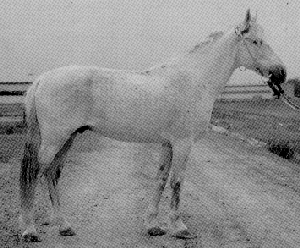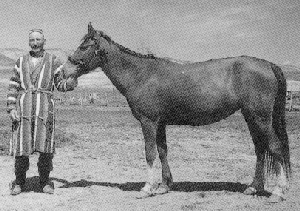Lokai Horses
 The Lokai is bred in central and southern Tajikistan; it is classified as a saddle
breed of Oriental lineage. The breed was developed by the Uzbek Lokai tribe through
improvement of local medium-sized horses using various Central Asian breeds, such
as the Iomud and, to a lesser extent, the Akhal-Teke and the Karabair. Subsequently it was influenced by Arabian stallions brought from Bukhara.
The Lokai is bred in central and southern Tajikistan; it is classified as a saddle
breed of Oriental lineage. The breed was developed by the Uzbek Lokai tribe through
improvement of local medium-sized horses using various Central Asian breeds, such
as the Iomud and, to a lesser extent, the Akhal-Teke and the Karabair. Subsequently it was influenced by Arabian stallions brought from Bukhara.
Lokai horses are the shortest in stature among the Central Asian breeds. They are not sufficiently uniform in type; the head is sometimes coarse and bulky and sometimes lacking breed character. In most cases the head is short, the neck medium in length, lean, often low set, with a prominent throat-latch. The withers are medium in height and broad; the back is straight, wide and short; the loin is prominent with well-developed muscles. The croup is long, often sloping and well muscled. The chest is deep and broad, the ribs rounded, the groin short. The legs are solid with hard hoofs. The legs are not always properly set; the forelegs are often splayed and the hindlegs are often cow-hocked or bowed. Coarse joints and general flabbiness are found in horses of large size. Bay, gray and chestnut are the most widespread colors. The surface hairs are characteristically S-shaped. The average measurement (in cm) of Lokais are: stallions - height at withers 145, oblique body length 145, chest girth 162, cannon bone girth 19; mares: 142, 144, 162 and 18 respectively.

Lokai horses are characterized by good action and extreme hardiness. They have great endurance under saddle and pack and in national games, particularly in kok-par. They reach maturity late, but respond well to improved feeding and management. When purebred Lokais were reared in good stable conditions, by the age of 2 1/2 years they surpassed their contemporaries reared in taboons by 6 cm in height at withers.
A new breed of saddlers is now being bred in Tajikistan by mating Lokai mares to Arabian and Thoroughbred stallions.
References
Dmitriez, N.G. and Ernst, L.K. (1989) Animal Genetic Resources of the USSR. Animal Production and Health Paper Publ. by FAO, Rome, 517 pp.
